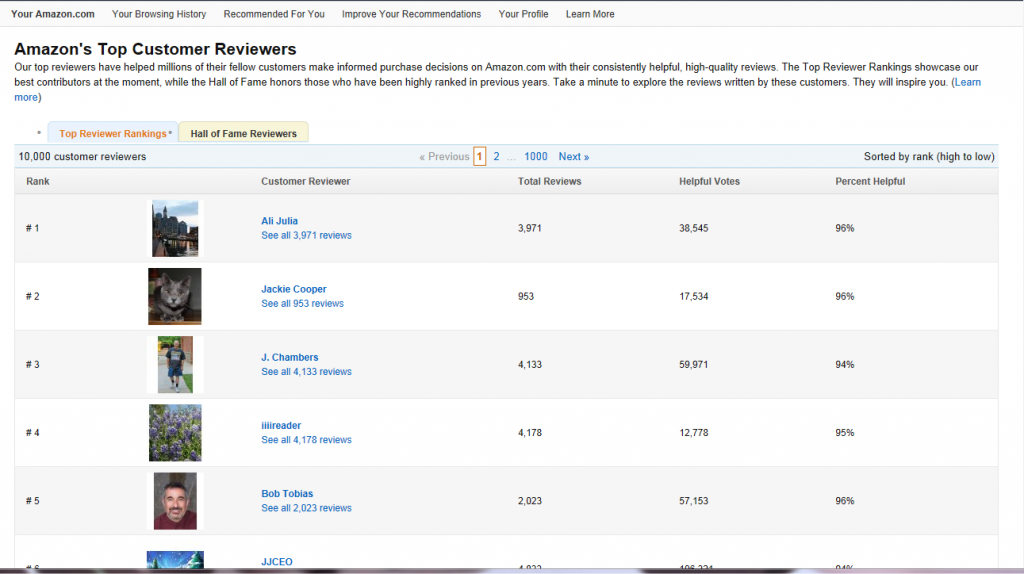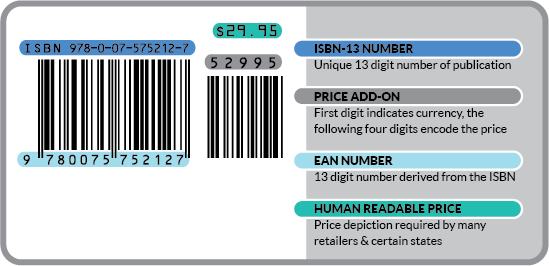Unless you have previous experience in the print or publishing industries, there are many terms which might be confusing for new independent self publishers. The following information is derived from the Digital Book Printing for Dummies®- just out from the Book Industry Study Group. It is an easy guide designed to help clarify both traditional and new printing terminology.
4-0-0-4: A printing industry specification that indicates a book cover is printed in four colors on the front and back covers with no printing on the inside front and back. 4-1-1-4 indicates four colors on the front and back, with one color (usually black) on the inside front and back covers. Digital books are typically printed 4-0-0-4.
Binding: The process of physically assembling a book from a number of folded or unfolded sheets of paper or other material. It also usually involves attaching covers to the assembled book block. With digital printing, two different binding methods are possible. Also see in-line binding and off-line binding.
Bleed: An image that extends over one or more edges of a page. A full bleed image extends over all the edges of a page, leaving no unprinted gutter (inside) or thumb (outside) margin. Bleeds across gutters (a two-page spread) are not available with digital printing.
Book block: The printed pages of a book, ready for binding.
Case bound: See hardcover.
CMYK (or four-color process printing): Four ink colors- cyan (blue), magenta (red), yellow, and black- build the spectrum of colors. In digital printing, the red, green, and blue (RGB) system used on a computer screen and Pantone Matching System (PMS) ink colors are usually converted to CMYK. This conversion can cause color variation between digitally printed jobs and offset jobs, where PMS colors can be matched.
Coating: An addition during the printing process that protests the ink and reduces scuffing and fingerprinting. Many digitally printed book covers are film laminated rather than UV-coated or varnished. Coatings are applied in two different ways: Spot coatings target one part of the page, such as one color or the text; flood coatings cover the entire page. Coatings can be gloss or matte. Coating options vary by vendor.
Coil bound: A binding method that relies on a metal or plastic coil inserted through holes punched through the pages.
Distribute and print/ distributive printing: Sending a file for a book so that it may be printed as close to the end-user as possible. With digital printing, a U.S. publisher can have books printed by European partners at significant savings in time and freight cost.
Dithering: A process that uses a pattern of dots to create the illusion of colors that aren’t actually available. For example, dots of different red, cream, and white shades might create a pattern the tricks the eye into seeing pink. Halftones, the reproducible images of black and white photos, are produced with dithering; the pattern of interspersed black and white dots create an illusion of different grays.
Dot gain: The tendency for printed dots to be larger than intended, often because of the way ink reacts with paper. If the ink soaks into the paper ( as is typical with newsprint and similar stock) and spreads out, the resulting dot is much larger than intended.
Dots per inch (dpi): A measurement of the resolution of a laser or inkjet printer. A higher dpi creates crisper images and type. Sources differ regarding how dpi compares to lines per inch (lpi). Some printers and designers recommend that images (such as JPEGs and TIFs) be created with a dpi double that of the lpi which the image will be screened for printing. For example, a photo should be created at no less than 600 dpi if it will be screened at 300 lpi. Other sources recommend a much greater difference: 600 dpi for an image that will be used in a newspaper, which often has 85 lpi, or 2400 dpi for an image that will appear in a glossy magazine, which may have 150 to 200 lpi.
Duotone: Image that is screened and then printed in two colors.
Electronic Data Interchange (EDI): Generally speaking, a computer-to-computer exchange of information or documents using standard structure and language, with minimal manual interference. This enables, for instance, automated ordering. For example, a publisher places an order from its inventory or ordering system, the vendor sends an electronic orders acknowledgement and a shipping confirmation, and then usually the print vendor generates a monthly invoice summary and forwards to the publisher.
Gamut: A range, or subset, of colors. When certain colors can’t be displayed within a particular color model, those colors are said to be out of gamut. For example, the pure red contained in the RGB color gamut is out of gamut in the CMYK model and must be converted to an approximate value.
Grain: The way fibers align in paper stock. A sheet of paper more easily curls, folds, and tears in the direction of its grain. To check grain, spray water on one side of a page; it will curl with the grain. Jeanne Drewes of the Library of Congress explains that cross-grain bound materials are often called mouse traps because these books tend to snap shut on their own.
Halftone: To be printer in one color, a continuous tone image such as a black and white photograph must be converted through a line screening process into black or white dots. A higher concentration of black dots results in a darker shade. Also see dithering.
Hardcover (or hardbound): Those books that are encased in a stiff, cloth-covered book board or those that have a printed and laminated paper cover over book board. Typically, the book’s title, author, and publisher names are stamped or printed on the spine. Dust jackets are common for hardcover trade books. A classic hardcover book is called case bound.
Imposition: The process of arranging individual pages on a sheet (traditionally called a flat) so that after they’re printed, folded, and trimmed, the resulting pages back up correctly and are in the proper order. Imposition is an important issue when books are printed in signatures, as in offset lithography or with digital web process.
In-line binding: Available only for paperbacks, the print engine feeds the book block directly to a binding unit, a three-knife trimmer, and then a packing and boxing station.
Inside covers: The reverse sides of the cover. The revers side of the front cover is called the inside of the front cover and the reverse of the back cover is the inside of the back cover. Inside covers are often printed in black ink on mass-market titles. Inside cover printing isn’t always available from digital presses.
Lines per inch (lpi): A measurement of the resolution of a halftone image or line screen. The higher the lpi, the finer the screen and the sharper the image. Sources differ regarding how dots per inch (dpi) compares to lpi; the definition of dots per inch tells you more about common recommendations.
Native file: Book files that remain in the desktop-publishing application in which they were created. Some printers may ask that you submit both native files (for example, QuarkExpress or InDesign) and PDFs.
Non-approval proof: A proof submitted by a printer to a client for information only; the printer doesn’t wait for approval before printing.
Nonreturnable: A product that a customer can’t return for credit.
Off-line binding: The equipment is separate from the press. In most cases, this means a process similar to the manufacture of offset publications: Books are printed on several presses and then moved to a staging area awaiting binding, which can be perfect, saddle-stitched, mechanical, or case bound.
Offset lithography: A photographic printing technique that uses inks carried by rubber rollers called printing blankets, to transfer images for metal plates to paper. To change what the press is printing, the plates have to be physically exchanged. To change ink color, the rollers have to be cleaned.
One-off printing: Printing one book at a time on a digital press. Also called print on demand (POD).
Pages per inch (PPI): The thickness of book paper, or stock, and thus the thickness of a book spine. The higher the number, the more pages per inch, and thus the thinner the spine. PPI varies by type of paper, paper manufacturer, and so on, and digital printers often offer a relatively small selection of text stocks with standard PPIs.
Pantone Matching System (PMS): An ink matching system used to specify exact colors. Most digital color presses use a four-color (CMYK) system and can’t match PMS colors, but inkjet equipment now being developed is expected to make more PMS matches possible.
Paper, printing, and binding (PP&B): A printing industry term that describes the manufacturing costs of a book.
Perfect binding: A type of binding for which a paper cover is glued to a trimmed book block, creating a square (or perfect-bound) spine.
Portable Document Format (PDF): A file format created by Adobe Systems to enable document transfer via e-mail, FTP, or such physical devices as CDs while maintaining readability on any computer that has Adobe’s free Acrobat Reader software regardless of operation system or platform. Generic PDF creation software is now available but isn’t supported by all vendors.
Proof for approval: A proof that requires approval from the publisher before the vendor proceeds with printing or binding.
Resolution: Clarity of type and image, defined by dots per inch―the number of individual dots that can be places within the span of 1 linear inch. A low dpi can cause the printed image to be blurry or blocky.
Returnable: In publishing, books sold to bookstores have traditionally been returnable for credit. At press time, most POD vendors sold only on a nonreturnable basis, although some publishers permit returns.
RGB: Red, green, and blue are the colors used to create images on monitors. RGB images must be converted to CMYK for printing.
Saddle-stitched: Bound with staples at the center fold. Publications with a limited number of pages and many magazines and catalogs are saddle-stitched. Because saddle-stitched publications don’t have a spine, many retailers don’t stock them.
Scanning: Creating an electronic copy of printed text or images.
Sheet-fed (or cut sheet) press: Printing presses that print by using stacks of single sheets. These presses usually print at lower volume, but with higher quality, than web presses.
Short-run printing: Printed off either digital print engines or offset presses, small press runs usually ship to a distribution center.
Signature: A section produced by folding a printed sheet before binding and trimming. (When folded in half, a sheet creates a signature of four pages; when folded in quarters, it produces a signature of eight pages.) Offset sheet-fed presses almost always print signatures in multiples of eight pages, usually 24 or 32. Digital web presses can work with signatures as small as four. Digital presses also create a stack of single pages, printed on both sides.
Soft proof (or e-proof): An electronically transmitted sample of the book, usually provided for approval of the book before it is printed. Soft proofs save time and money over hard copy proofs, as they don’t have to be mailed.
Subsidy press: Also called vanity presses, companies that require authors to pay all the costs of publishing a book. These companies may offer editing by professionals and custom-designed covers. Most subsidy presses, provide no marketing, and the books they print often aren’t accepted by libraries or traditional wholesalers and distributors. Digital vendors and author services companies evolved in part to provide authors with another option for producing small quantities of books at lower costs.
Title metadata: Descriptive information about the product title that is required by the printer, distributor, wholesaler, or online retailer. Information may include ISBN, author, title, page count, trim size, binding style, and text colors.
Trim (or trim size): The height and width of a book. A 5-x-7 inch trim usually measures 7 inches along the spine and 5 inches without the invoice in the box.
Unit cost: The manufacturing cost of a book, not including the design, compensation to the author, or any publisher’s overhead such as editing or layout and design or distribution and storage costs.





